Joseph Richard Langlois
age ~55
from Clarksville, TN
- Also known as:
-
- Joseph R Langlois
- Joseph L Langlois
- Joseph R Lanlois
- Joe R Langlois
- Joe S Langlois
- Juseph R Langlois
- Josjeph Langlois
- Joseph Langloi
- Phone and address:
-
4238 Sango Rd, Clarksville, TN 37043
9313689302
Joseph Langlois Phones & Addresses
- 4238 Sango Rd, Clarksville, TN 37043 • 9313689302
- Powder Springs, GA
- Graham, WA
- Royal Palm Beach, FL
- Coral Springs, FL
- Wahiawa, HI
- Cobb, GA
Work
-
Company:American Lake VA Puget Sound
-
Address:9600 Veterans Dr Sw, Tacoma, WA 98493
-
Phones:2535894059
Education
-
School / High School:University of Wisconsin / Madison1974
Languages
English
Awards
Healthgrades Honor Roll
Ranks
-
Certificate:Dermatology, 1982
Specialities
Internal Medicine • Dermatology
Medicine Doctors

Dr. Joseph C Langlois, Tacoma WA - MD (Doctor of Medicine)
view sourceSpecialties:
Internal Medicine
Dermatology
Dermatology
Address:
American Lake VA Puget Sound
9600 Veterans Dr Sw, Tacoma, WA 98493
2535894059 (Phone)
9600 Veterans Dr Sw, Tacoma, WA 98493
2535894059 (Phone)
Certifications:
Dermatology, 1982
Internal Medicine, 1977
Internal Medicine, 1977
Awards:
Healthgrades Honor Roll
Languages:
English
Education:
Medical School
University of Wisconsin / Madison
Graduated: 1974
University of Wisconsin / Madison
Graduated: 1974

Joseph C. Langlois
view sourceSpecialties:
Dermatology
Work:
American Lake VA Puget Sound
9600 Veterans Dr SW, Tacoma, WA 98493
2535894059 (phone), 2535894028 (fax)
9600 Veterans Dr SW, Tacoma, WA 98493
2535894059 (phone), 2535894028 (fax)
Education:
Medical School
University of Wisconsin Medical School
Graduated: 1974
University of Wisconsin Medical School
Graduated: 1974
Procedures:
Destruction of Benign/Premalignant Skin Lesions
Skin Surgery
Skin Tags Removal
Skin Surgery
Skin Tags Removal
Conditions:
Contact Dermatitis
Dermatitis
Plantar Warts
Skin Cancer
Acne
Dermatitis
Plantar Warts
Skin Cancer
Acne
Languages:
English
Description:
Dr. Langlois graduated from the University of Wisconsin Medical School in 1974. He works in Tacoma, WA and specializes in Dermatology.

Joseph Claude Langlois
view sourceSpecialties:
Dermatology
Internal Medicine
Internal Medicine
Education:
University of Wisconsin at Madison (1974)
Resumes

Joseph Langlois
view source
Joseph Langlois
view source
Joseph Langlois
view source
Joseph Langlois
view source
Joseph Langlois
view sourceName / Title
Company / Classification
Phones & Addresses
Dermatology
Veterans Health Administration
Administrative Veterans' Affairs · General Hospital · Medical Doctor's Office Administrative Veterans' Affairs · Health/Allied Services
Administrative Veterans' Affairs · General Hospital · Medical Doctor's Office Administrative Veterans' Affairs · Health/Allied Services
9600 Veterans Dr SW, Tacoma, WA 98493
2535828440
2535828440
President, Director
Langlois & Nadeau, Inc
644 SE 4 Ave, Fort Lauderdale, FL 33301
Us Patents
-
Apparatus For Preventing Fuel Spillage
view source -
US Patent:55158919, May 14, 1996
-
Filed:Jun 20, 1994
-
Appl. No.:8/262628
-
Inventors:Joseph R. Langlois - Coral Springs FL
-
Assignee:LNG & K, Inc. - Ft. Lauderdale FL
-
International Classification:B63B 1700
-
US Classification:141307
-
Abstract:An apparatus is provided for preventing the spillage of fuel into the water or onto a marine vessel when filling a fuel tank on the vessel. A vent line is coupled between the fuel tank and a vent port of the vessel, at least one valve assembly is coupled within the vent line, and an overflow container is coupled within the vent line between the valve assembly and the vent port. The valve assembly defines a drain hole for permitting small quantities of fuel, gases and/or vapors to pass through the valve assembly and into the overflow container. A fill container defines an inlet port for receiving a fuel nozzle to fill the fuel tank with fuel, and an outlet port coupled in fluid communication with a fill line for the passage of fuel between the fill container and the fuel tank. A by-pass line is coupled between the fill container and the overflow container for the passage of overflow fuel through the fill container, and an indicator system is mounted within the fill container for signaling to an attendant when the fuel tank is filled. Upon filling the fuel tank with fuel, the overflow fuel backs up into the fill container, and in turn flows through the by-pass line and into the overflow container.
-
Method For Preventing Fuel Spillage
view source -
US Patent:57276030, Mar 17, 1998
-
Filed:May 8, 1996
-
Appl. No.:8/646944
-
Inventors:Joseph R. Langlois - Coral Springs FL
-
Assignee:L N G & K, Inc.
-
International Classification:B63B 1700
-
US Classification:141 1
-
Abstract:An apparatus is provided for preventing the spillage of fuel into the water or onto a marine vessel when filling a fuel tank on the vessel. A vent line is coupled between the fuel tank and a vent port of the vessel, at least one valve assembly is coupled within the vent line, and an overflow container is coupled within the vent line between the valve assembly and the vent port. The valve assembly defines a drain hole for permitting small quantities of fuel, gases and/or vapors to pass through the valve assembly and into the overflow container. A fill container defines an inlet port for receiving a fuel nozzle to fill the fuel tank with fuel, and an outlet port coupled in fluid communication with a fill line for the passage of fuel between the fill container and the fuel tank. A by-pass line is coupled between the fill container and the overflow container for the passage of overflow fuel through the fill container, and an indicator system is mounted within the fill container for signaling to an attendant when the fuel tank is filled. Upon filling the fuel tank with fuel, the overflow fuel backs up into the fill container, and in turn flows through the by-pass line and into the overflow container.
-
Apparatus For Preventing Fuel Spillage
view source -
US Patent:53220994, Jun 21, 1994
-
Filed:Jul 8, 1992
-
Appl. No.:7/910619
-
Inventors:Joseph R. Langlois - Coral Springs FL
-
Assignee:L N G & K, Inc. - Ft. Lauderdale FL
-
International Classification:B63B 1700
B67D 506 -
US Classification:141307
-
Abstract:An apparatus is provided for preventing the spillage of fuel into the water or onto a marine vessel when filling a fuel tank on the vessel. A vent line is coupled between the fuel tank and a vent port of the vessel, at least one valve assembly is coupled within the vent line, and an overflow container is coupled within the vent line between the valve assembly and the vent port. The valve assembly defines a drain hole for permitting small quantities of fuel, gases and/or vapors to pass through the valve assembly and into the overflow container. A fill container defines a first aperture for receiving a fuel nozzle to fill the fuel tank with fuel, a fitting portion for seating the fill container within a fuel fitting coupled to the fuel tank on the vessel, and a second aperture for permitting fuel to pass between the fill container and the fuel tank. Upon filling the fuel tank with fuel, the overflow fuel is collected within the fill container, thus signalling to the attendant to turn off the fuel nozzle. The pressure differential caused by the overflow fuel within the fill container causes fuel to slowly pass through the drain hole in the valve assembly and into the overflow container, which in turn permits the overflow fuel in the fill container to drain into the fuel tank.
-
Apparatus And Method For Preventing Fuel Spillage
view source -
US Patent:59506881, Sep 14, 1999
-
Filed:May 13, 1997
-
Appl. No.:8/855409
-
Inventors:Joseph R. Langlois - Coral Springs FL
-
Assignee:LNG&K, Inc. - Ft. Lauderdale FL
-
International Classification:B63B 1700
-
US Classification:141 1
-
Abstract:An apparatus is provided for preventing the spillage of fuel into the water or onto a marine vessel when filling a fuel tank on the vessel. A vent line is coupled between the fuel tank and a vent port of the vessel, at least one valve assembly coupled within the vent line, and an overflow container is coupled within the vent line between the valve assembly and the vent port. The valve assembly defines a drain hole for permitting small quantities of fuel, gases and/or vapors to pass through the valve assembly and into the overflow container. A fill container defines an inlet port for receiving a fuel nozzle to fill the fuel tank with fuel and an outlet port coupled in fluid communication with a fill line for receiving a fuel nozzle to fill the fuel tank with fuel, and an outlet port coupled in fluid communication with a fill line for the passage of fuel between the fill container and the fuel tank. A by-pass line is coupled between the fill container and the overflow container for the passage of overflow fuel through the fill container, and an indicator system is mounted within the fill container for signaling to an attendant when the fuel tank is filled. Upon filling the fuel tank with fuel, the overflow fuel backs up into the fill container, and in turn flows through the by-pass line and into the overflow container.
-
Enhanced Trim Tab System With Fluid Hinge For Variable-Transom Watercrafts
view source -
US Patent:20210371059, Dec 2, 2021
-
Filed:Aug 12, 2021
-
Appl. No.:17/401156
-
Inventors:Joseph R. Langlois - Pompano Beach FL, US
-
International Classification:B63B 39/06
B63B 34/75 -
Abstract:A system for a transom-mount trim tab with a fluid hinge, including a trim tab having a planar surface, a forward section located under a hull of a watercraft, a rear portion extending aft of a transom, a pair of guiding tabs coupled to the trim tab, and a forward mounting means including fluid hinge brackets, each with a mounting plate, and a containment protrusion. The system further includes a pair of aft mounting brackets configurable for variable mounting, wherein each mounting bracket includes a vertical leg having an upper portion configurable to be angulated relative to a transom of a watercraft and a bottom portion configured in a vertical orientation. The upper portion of the vertical leg and the mounting bracket have a configurable angle there-between.
-
System And Method Of A Modified Trim Tab System With Fluid Hinge For Variable-Transom Watercrafts
view source -
US Patent:20210316818, Oct 14, 2021
-
Filed:May 3, 2021
-
Appl. No.:17/306595
-
Inventors:Joseph R. Langlois - Pompano Beach FL, US
-
International Classification:B63B 1/24
B63B 73/40 -
Abstract:A system and method of configuration including a trim tab having a planar surface, and guiding tabs coupled to the trim tab. The guiding tabs extend outward. A pair of mounting brackets, with a mounting plate, a vertical leg, and a safety catch tab are included. The mounting brackets are configurable for variable mounting. The vertical leg of the mounting bracket includes an upper portion bottom portion, the vertical leg bottom portion is vertical, and the upper portion is configurable to be angulated relative to a transom. The upper portion and mounting bracket have an angle between, which may be adjusted relative to a curvature in the transom. The guiding tabs configured to engage with the vertical legs of the mounting bracket, wherein the trim tabs are located forward of the vertical legs of the mounting brackets.
-
Transom Mounted Bracket For A Fluid Hinge Trim Tab System
view source -
US Patent:20190300122, Oct 3, 2019
-
Filed:Jun 5, 2019
-
Appl. No.:16/432393
-
Inventors:Joseph R. Langlois - Pompano Beach FL, US
-
International Classification:B63B 1/22
B63B 1/32
B63B 39/06 -
Abstract:A transom mounted fluid hinge bracket having one mounting plate that is connected at a lower distal end to a horizontal bracket portion which extends forward and aft of the transom of a watercraft in a bow to stern axial displacement, the horizontal bracket abutting the underside of the hull of a watercraft sitting flush with the underside of the watercraft, at least one fluid hinge receiver secured to the back side of the horizontal bracket portion on which the back of the substantially planar surface of the trim tab may rest, the at least one fluid hinge receiver containing the substantially planar surface in a position of the planar surface resting about parallel to the hull of the watercraft, and the at least one fluid hinge receiver without any load from the planar surface except at rest keeping the planar surface from descending below a horizon parallel to that of a horizon of the hull.
-
System For Attitude Control And Stabilization Of A Watercraft
view source -
US Patent:20190225303, Jul 25, 2019
-
Filed:Apr 4, 2019
-
Appl. No.:16/375453
-
Inventors:Joseph R. Langlois - Pompano Beach FL, US
-
International Classification:B63B 1/28
B63B 1/26
B63B 1/24
G05D 1/08 -
Abstract:A system and method involving hydro-lifters for achieving attitude and control of a watercraft including at least one elongate planar surface, at least one actuator mounted to the hull of the watercraft and pivotally connected to a planar surface. The system using at least one containment shelf-bracket fastened to the underside of the hull forming a non-fixed containment area, between an upper surface of the containment shelf-bracket and the hull, to capture the planar surface and provide a support surface on which the planar surface may rest and allowing forward, aft, and vertical slidabilty of the planar surface. A method for calculating optimal surface area of the planar surfaces for fuel efficiency by obtaining the measurements of an overall length of the hull and maximum beam of the hull, multiplying the measurement, multiplying the value by 1-3%, and dividing the resulting number by the quantity of planar surfaces.
License Records
Joseph R Langlois
Address:
224 SE 1 St APT 2, Deerfield Beach, FL
License #:
56208 - Expired
Category:
Health Care
Issued Date:
Jan 30, 1989
Expiration Date:
Dec 1, 1990
Type:
Emergency Medical Technician
Googleplus

Joseph Langlois
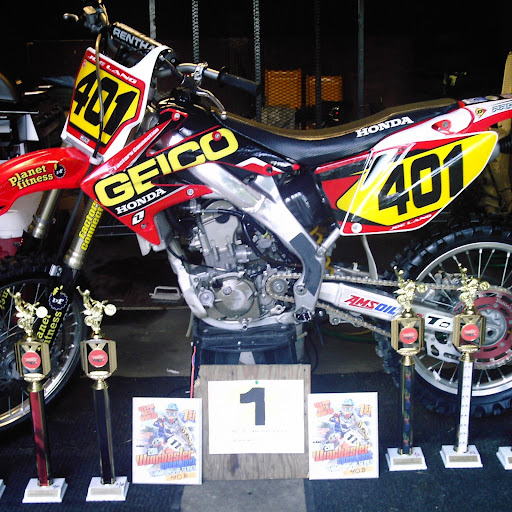
Joseph Langlois

Joseph Langlois

Joseph Langlois
Youtube
Classmates

Joseph Langlois
view sourceSchools:
Archbishop Spalding High School Severn MD 1973-1977
Community:
Stacey Hughes, Nancy Beatty, Sandy Delawder, Mark Thieme

Joseph Langlois
view sourceSchools:
Chittick Elementary School East Brunswick NJ 1970-1973, Glenn Elementary School Old Bridge NJ 1973-1976, Salk Middle School Old Bridge NJ 1976-1978
Community:
Eric Frommer

Joseph Langlois | Bonny E...
view source
Joseph Langlois, Chino Hi...
view source
Lincoln Technical Institu...
view sourceGraduates:
Joseph Langlois (2002-2003),
Stephan Petty (1972-1975),
Darryll Wilkie (1987-1989)
Stephan Petty (1972-1975),
Darryll Wilkie (1987-1989)

Glenn Elementary School, ...
view sourceGraduates:
Mark Reeves (1963-1965),
Joseph Langlois (1973-1976),
Ilene Berko (1963-1965),
Joseph Yankoski (1977-1983),
Bethanie Healey (1979-1983)
Joseph Langlois (1973-1976),
Ilene Berko (1963-1965),
Joseph Yankoski (1977-1983),
Bethanie Healey (1979-1983)

Salk Middle School, Old b...
view sourceGraduates:
Joseph Langlois (1976-1978),
Cristina Santos (1980-1984),
Amy Grynberg (1984-1986),
Edward Samaro (1975-1977)
Cristina Santos (1980-1984),
Amy Grynberg (1984-1986),
Edward Samaro (1975-1977)

Chittick Elementary Schoo...
view sourceGraduates:
Elizabeth Wallace (1970-1973),
Ian Feibelman (1985-1991),
Priscilla Petrosky (1987-1993),
Donna Vargas (1986-1988),
Joseph Langlois (1970-1973)
Ian Feibelman (1985-1991),
Priscilla Petrosky (1987-1993),
Donna Vargas (1986-1988),
Joseph Langlois (1970-1973)

Joseph Langlois
view source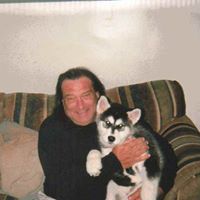
Joseph Langlois
view source
Joseph Langlois
view source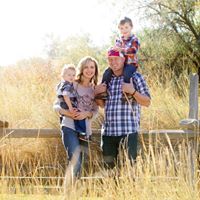
Joseph Langlois
view source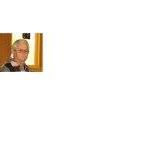
Joseph Langlois
view source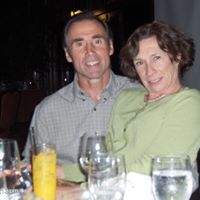
Joseph George Langlois
view source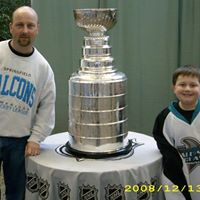
Joseph Langlois
view source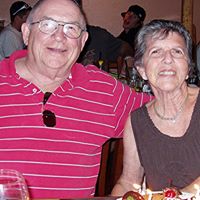
Joseph Richard Langlois
view sourceFlickr
Myspace
Get Report for Joseph Richard Langlois from Clarksville, TN, age ~55














